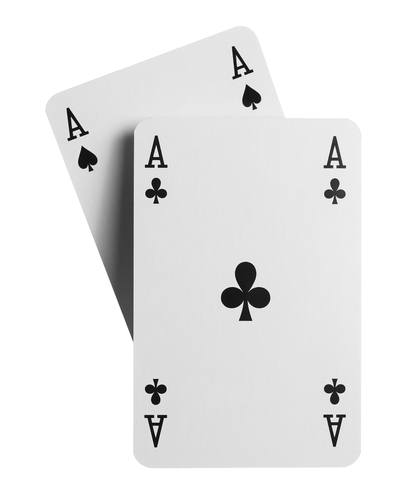R. Paul Wilson Explores: The Old-School Card Con Behind Barroom Deception

Classic scams have stood the test of time for a reason-the masterful blend of psychology, showmanship, and human nature. One such time-honored con involves a simple deck of cards, clever theatre, and a bar full of unsuspecting marks. This enduring trick, once detailed in The Artful Dodges of Eddie Fields and famously demonstrated on The Real Hustle, remains a fascinating case study in confidence artistry and the pitfalls of assumption.
The Appeal of Old-Fashioned Hustles
There’s something almost cinematic about a skillful hustler working a room-especially when it evokes the nostalgia of films like The Flim-Flam Man starring George C. Scott, where crafty swindlers take small-town locals for a ride. Had I roamed the country as a grifter in the 1950s, this clever bar card con would have been essential kit-seamless, theatrical, and designed to lure victims into outsmarting themselves.
Anecdotes from Card Trick Fatigue to Inspirational Scams
Discussions about card tricks often spark divided reactions. As the author, I recall childhood years spent inflicting endless card magic on a long-suffering friend-eventually leading to his total aversion to the subject. Years later, an unexpected encounter occurred when another magician friend joined us uninvited, launching into card tricks despite clear disinterest. Much to my surprise, I later found this almost word-for-word scenario echoed in a W. Somerset Maugham story, reinforcing the idea that overzealous performers are a universal experience.
Historically, card tricks served as the foundation for many barroom hustles. In 1940s Chicago, Eddie Fields and his accomplice capitalized on society’s skepticism towards such performers-using that bias to set their trap.
How the Bar Card Scam Begins
The scheme started with Eddie, the frontman, strolling into a lively bar and making a name for himself as the outgoing, slightly obnoxious regular. He'd propose a series of harmless bar bets and feats using everyday items like olives, forks, or sugar cubes, soon earning a reputation as the bar’s resident big-mouth and snagging a few free drinks along the way.
Meanwhile, his partner-unknown to the crowd-would quietly enter, finding a spot nearby as Eddie held court. Once the mood was right and the marks sufficiently primed, the accomplice would signal Eddie to switch gears and break out a deck of cards, performing a suite of beginner-friendly miracles.
The climax of this ruse was the "Circus Card Trick"-a clever trap. Instead of targeting a random bystander, Eddie would "magically" win a game against his planted partner, causing apparent outrage and “losses” in front of the entire crowd.
The Heart of the Con: Dramatic Playacting
Following the staged defeat, Eddie’s partner would feign anger and accuse Eddie of cheating-enlisting the crowd’s sympathies. To calm tensions, Eddie would appease everyone by offering to teach the trick. He handed a deck to an observer, asking them to remove the two black aces.

To demonstrate, Eddie split the deck, placed the first black ace on top of the lower half, then stacked the second ace onto the first. He reassembled the deck and explained that, regardless of how many times it was cut, the two black aces would remain together. To prove it, Eddie instructed others to cut the deck then dealt cards face-up till one black ace appeared-claiming the next card would always be the second black ace, inviting the crowd to wager on the outcome.
When the crowd was skeptical, his partner would act confused, pushing Eddie to repeat the demonstration. This time, while Eddie showed one ace, the partner slyly buried extra cards between the aces-seeming to foil the trick. Now, the set-up seemed stacked against Eddie, creating an irresistible opportunity for the watching crowd.
The Critical Moment: Setting the Trap
As Eddie prepared to prove the principle one last time, he confidently wagered a thick stack of cash-pulled dramatically from his sock. His partner, acting rattled, refused to match the bet, paving the way for audience members (the real marks) to step in. After all, everyone had seen the partner place extra cards between the black aces-how could Eddie possibly win?
Several eager onlookers would pool their cash to cover Eddie’s bet, certain victory was theirs. The crowd held its breath as the prediction card was revealed.
Against all expectations, the card shown was the missing black ace-sealing the con and the fate of everyone’s wagers. By the time disbelief faded, both Eddie and his partner would be gone, leaving the lesson and the losses behind.
The Underlying Secret: Misdirection and Sleight of Hand
At the core, this scam relies on masterfully manipulating perceptions and expectations. Eddie combined crowd psychology with a sleight of hand move-a technique known as “The Glide” or, as later adapted, the “second deal”-making it appear as if the trick was doomed to fail while secretly setting up an inevitable win.
The process is as follows:
- While all eyes were on the partner sabotaging the setup, Eddie secretly bent a corner of the second ace.
- After the shuffle, he’d search for the bent card, deal cards face-up until reaching it, then switch to slickly dealing the next card (second deal) each time, bypassing the planted blockers.
- To the crowd-who thought they understood the principle-there seemed no possible way for luck to favor Eddie. The twist is that sleight of hand rendered all their observations moot.
This flawless blend of performance and deception guaranteed a steady stream of willing, yet unwitting, gamblers and easy paydays for the con artists.
Takeaway: Classic Cons and the Power of Showmanship
The barroom black ace con remains a masterclass in the art of manipulation, combining psychological insight, group dynamics, and flawless execution. Its continued retelling illustrates why, even in an age of digital trickery and modern cons, the fundamentals of deception remain unchanged.
Whether learning to spot such ploys or merely appreciating the ingenuity, remembering stories like this reminds us of the timeless appeal-and enduring danger-of a well-crafted con.













